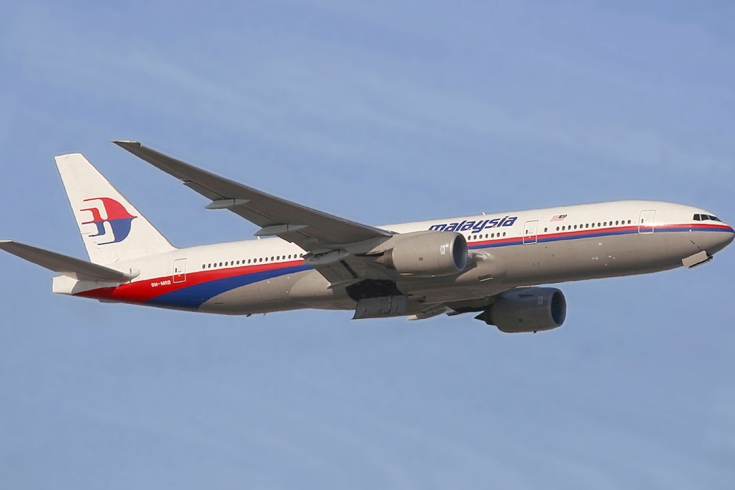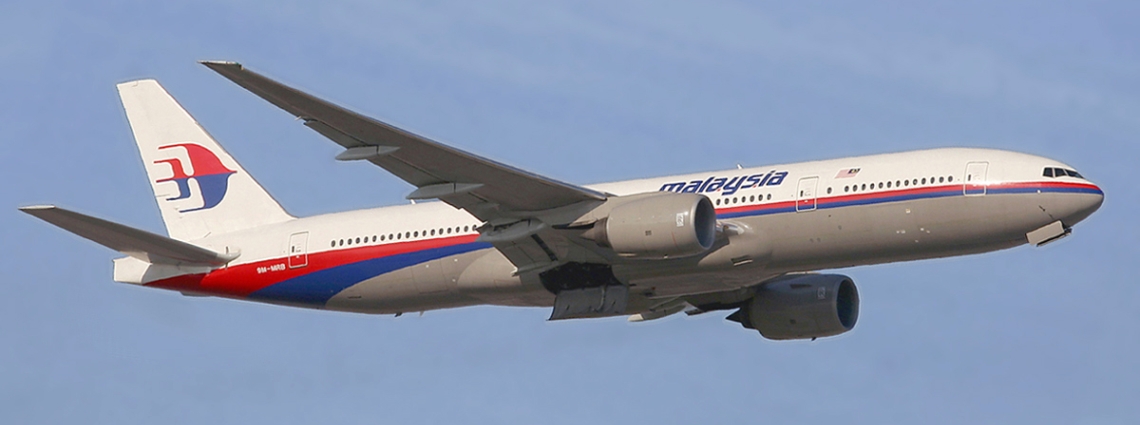Researchers encouraged to probe ctbto monitoring data for signs of missing malaysian airlines flight mh370
Member States of the Preparatory Commission of the Comprehensive Nuclear-Test-Ban Treaty Organization (CTBTO) and their institutions have requested the organization to provide technical assistance and data to aid the search for Malaysian Airlines flight MH370, which disappeared from flight control radars on Saturday 8 March 2014.

A Malaysian Airlines Boeing 777 aircraft. Photo courtesy Konstantin von Wedelstaedt
Our data could potentially shed light on the whereabouts of flight MH370. We owe it to the anxious families waiting for news of their loved ones that this potential is used to its fullest. So far the processing of our data has not provided information as to the whereabouts of the plane. I therefore encourage scientists in our Member States around the world to study our data carefully and add value with their national technical means and any other means to help this search. My prayers are with the passengers of flight MH370 and their families.
Airplane accidents may be detected, depending on the individual circumstances, by three of the four technologies used by the CTBTO’s International Monitoring System (IMS):
• Infrasound stations may detect an explosion: 60* stations around the world constantly “listen” for ultra-low frequency sound waves from nuclear explosions, but routinely detect other (smaller) explosions as well. See here (PDF) for background information on the potential for detection of flight MH370 through infrasound.
• Seismic stations could detect the impact of a larger aircraft on the ground: 170 stations sense the ground for shockwaves.
• Hydroacoustic stations are like hyper-sensitive microphones listening in the oceans. The 11 hydroacoustic stations can potentially detect the impact of a large aircraft into the oceans.
* All figures reflect the final configuration of the IMS. See interactive map for current status.
• Infrasound stations may detect an explosion: 60* stations around the world constantly “listen” for ultra-low frequency sound waves from nuclear explosions, but routinely detect other (smaller) explosions as well. See here (PDF) for background information on the potential for detection of flight MH370 through infrasound.
• Seismic stations could detect the impact of a larger aircraft on the ground: 170 stations sense the ground for shockwaves.
• Hydroacoustic stations are like hyper-sensitive microphones listening in the oceans. The 11 hydroacoustic stations can potentially detect the impact of a large aircraft into the oceans.
* All figures reflect the final configuration of the IMS. See interactive map for current status.
A few incidents involving planes have been registered in the past such as the crash of the FedEx cargo plane at Narita International Airport, Japan, in March 2009 or the crash of two F16 military aircraft at an air show in Belgium, in 2003. In those cases, IMS infrasound stations located within a few tens to a few hundreds of kilometres detected the events.
Background
The CTBTO is building a verification system to detect any nuclear explosion. The IMS will consist of 337 monitoring facilities when complete; over 85% have already been established and are sending data to CTBTO headquarters in Vienna.
The system quickly, reliably and precisely detected all three nuclear tests announced by the Democratic People’s Republic of Korea (DPRK). Moreover, its noble gas component was the only system worldwide to detect radioactivity in connection with the February 2013 DPRK announced nuclear test. CTBTO data is made available to all Member States in near-real time and has multiple spin-offs for disaster warning and science.
Access to IMS data for Member States’ experts:
Via the single sign-on CTBTO Web Portal
To apply for access to the CTBTO Web Portal, contact
support@ctbto.org
Access to IMS data for scientific and research institutions:
To apply for access to the virtual Data Exploitation Center, contact support@ctbto.org.
Via the single sign-on CTBTO Web Portal
To apply for access to the CTBTO Web Portal, contact
support@ctbto.org
Access to IMS data for scientific and research institutions:
To apply for access to the virtual Data Exploitation Center, contact support@ctbto.org.
14 Mar 2014
